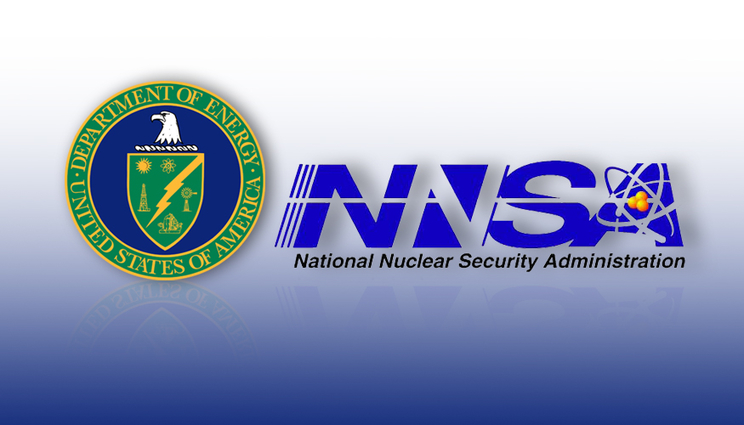Event honors 20 years of Stockpile Stewardship
 (Download Image)
The success of the Stockpile Stewardship Program was celebrated this week at an event hosted by the Department of Energy’s National Nuclear Security Administration.
(Download Image)
The success of the Stockpile Stewardship Program was celebrated this week at an event hosted by the Department of Energy’s National Nuclear Security Administration.
The proven success of the Stockpile Stewardship Program (SSP) – which pushed the limits of modern science and engineering by requiring the transition from explosive nuclear weapons testing to what is effectively virtual nuclear testing – was celebrated Wednesday at a half-day public event hosted by the Department of Energy’s National Nuclear Security Administration (NNSA).
Featured speakers included Secretary of Energy Ernest Moniz, Secretary of State John Kerry, and Under Secretary for Nuclear Security and NNSA Administrator Lt. Gen. (retired) Frank Klotz. See photos and videos.
Leading policy officials, thought leaders and the directors of the three national nuclear laboratories — Lawrence Livermore National Laboratory, Los Alamos National Laboratory and Sandia National Laboratories -- also participated in featured panel discussions on the policy conditions and scientific breakthroughs that have shaped the SSP as one of the greatest scientific achievements of our age, allowing the U.S. to maintain a safe, secure and effective nuclear weapons stockpile without explosive nuclear testing.
President Bill Clinton committed the nation to the SSP in 1995 as part of the announcement that the U.S. would pursue ratification and entry-into-force of the Comprehensive Nuclear Test Ban Treaty (CTBT) and maintain the nation’s nuclear arsenal without nuclear explosive tests. While the CTBT has been signed by the United States, it has not yet been ratified by the Senate.
"The SSP helps ensure that until the day of [global nuclear weapon] elimination comes, we can be confident that our stockpile will be safe and effective and reliable, and that’s what’s critical to deterrence," Kerry said. "Because we no longer have to conduct the [nuclear] explosive tests, we’re able to build an even more compelling set of arguments on behalf of U.S. approval of the Comprehensive Test Ban Treaty."
"This certainly could not be done by act of genius by one person but really by the cooperative effort of huge teams of scientists and engineers, principally at our labs, working together, in very considerable multi-disciplinary teams," Moniz said.
Today, nuclear explosive testing has been replaced by an annual assessment process that examines each weapons system in scientific and engineering detail in a manner that is instilled with scientific rigor and allows peer review.
"This event honors a triumph of innovation and invention," Klotz said. "It also pays tribute to the remarkable accomplishments of the literally thousands of scientists, technicians, and engineers working within the nuclear security enterprise who turned a vision into a reality."
Beyond ensuring the reliability of the nation’s nuclear stockpile, the SSP has driven world-leading technologies, including high-performance computing and breakthroughs on lasers, optics, diagnostics, materials properties and engineering designs. Through these stockpile investments, national lab scientists and engineers have established unrivaled expertise in modeling and simulation, hydrodynamic testing, subcritical experiments, high-energy-density physics, materials science and weapons engineering that have led to numerous other national security applications.
The DOE/NNSA event was held at the Navy Memorial and Naval Heritage Center’s Burke Theater. Video archives of the event will be available on NNSA’s website and YouTube channel.
Contact
Lynda L Seaver[email protected]
925-423-3103
Related Links
NNSAStockpile Stewardship at 20 years
Tags
Nuclear deterrenceStockpile stewardship
HPC, Simulation, and Data Science
Computing
Engineering
Global Security
Lasers and Optical S&T
Lasers
National Ignition Facility and Photon Science
Physical and Life Sciences
Strategic Deterrence
Featured Articles







